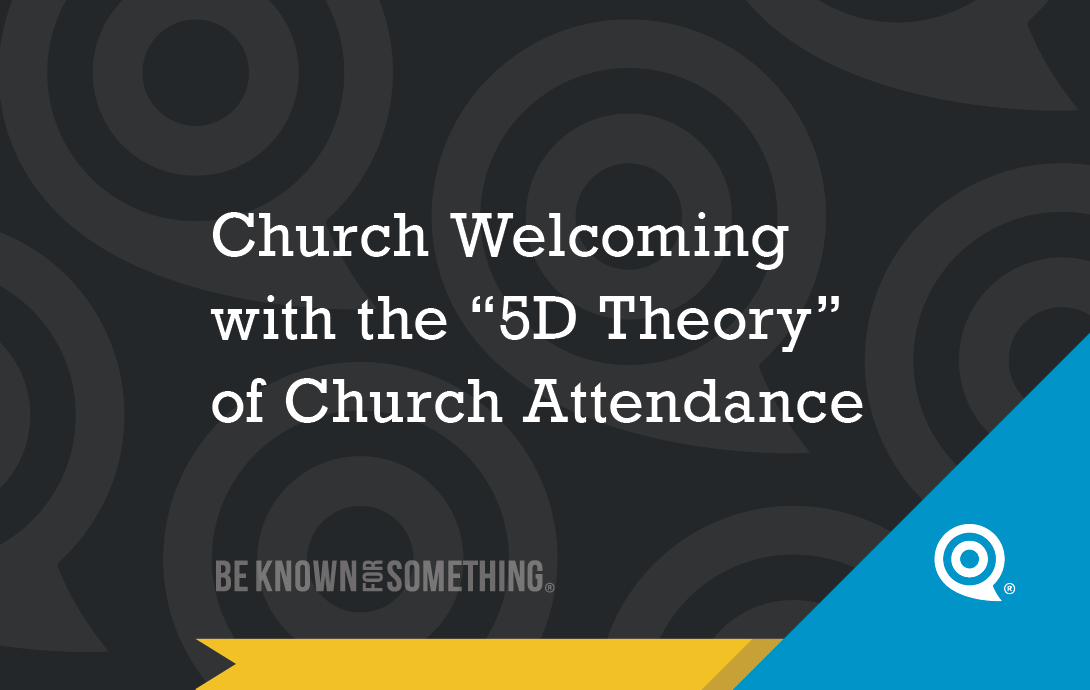Church welcoming with the “5D Theory” of church attendance

“5D Theory” represents the five key reasons (starting with D) why people often visit a church for the first time: Divorce, Death, Displacement, Disaster, and Development. These guests are likely seeking comfort, community, and spiritual guidance during a significant life transition. So, church welcoming is essential. To truly welcome and encourage them to return, your church needs to be intentional in how it communicates with them. Here are some practical tips to create a welcoming environment within the 5D Theory:
1. Communicate with Consistency, Clarity, and Compassion
Online Presence: Your church’s website and social media should clearly convey what visitors can expect, emphasizing understanding and compassion. Regularly, highlight ministries and groups tailored to those experiencing challenges like grief, divorce, or relocation. Use language that’s both inviting and empathetic.
Pre-Visit Communication: When people visit your website with an interest in visiting, encourage them to register. On that form, get them to indicate one of their 5D reasons for visiting. Be sure to give them a reason to register, like a gift when they arrive or the assurance that a friendly face will welcome them by name. From their registration information, reach out with a personalized message. Acknowledge their 5D reason, and provide details on what they can expect during their visit. Then, share the registration information with your welcome station. A personal connection can make a significant impact!
2. Be Known for Positive First Impressions
Greeter Training: Train your greeters to be sensitive to the 5D Theory. A warm smile, a genuine welcome, and a readiness to assist are crucial. Greeters should be observant and prepared to offer extra guidance to those who may appear lost or anxious. In their initial conversation, a greeter should try to qualify the visitor for one of the 5D theory reasons. Then lead the visitor to the next steps based on their 5D.
Welcome Station: Position a clearly marked welcome station near the church entrance. Staff it with friendly volunteers who can answer questions, provide information, and offer a small welcome gift. Make sure the station is easy to approach and in a visible location. Don’t position the volunteers behind a desk, since it’s better to have them in front of the area without a barrier between them and the guest. They need to double-check the online registration list and get the visitor registered if they didn’t do it online. Tactfully confirming which of the 5Ds brought them in.
3. Create a Comforting Atmosphere
Welcoming Environment: Ensure your church feels welcoming. Good lighting, comfortable seating, friendly people, and music can help create an environment where visitors feel at ease. Consider providing a quiet space or prayer area for those seeking a place to think and possibly find someone who cares and will pray with them.
Clear Signage: Ensure your church has clear, friendly signage directing people to key areas like the worship area, restrooms, children’s ministry, and groups. Use welcoming language to make navigation easy!
4. Engaging Services
Relatable Sermons: Pastors should be aware that visitors may be present and be mindful of the 5D Theory. Sermons (and/or the welcome time) need to acknowledge the struggles people might be facing. Offer hope and practical biblical guidance that speaks to their situation, without assuming deep theological knowledge.
Invitation to Connect: During services, gently invite first-time visitors to connect with a pastor, visit the welcome station, or join a small group. Ensure this invitation feels warm and non-pressuring. Give online registration possibilities for those who would prefer to have a non-personal interaction at this time.
5. Thoughtful Follow-Up
Thank You Email: Send a thank you email after their visit, expressing gratitude and acknowledging the specific 5D Theory challenge they might be facing. Offer additional resources or invite them to relevant support groups. This follow-up shows your church genuinely cares. The email can come from the Pastor, the welcome station volunteer, or, even better, someone in an appropriate support group.
Personalized Contact: When possible, a member of the pastoral team should follow up with a phone call or voicemail, especially if the visitor is dealing with a significant life event. This personal touch can be incredibly meaningful and encourages them to return. If a voicemail is left for the visitor, be sure they know what the next steps are for them based on their 5D Theory reason.
By applying 5D Theory to your church’s approach, you can create an environment that makes first-time visitors feel truly welcome. Through clear communication, warm greetings, a comforting atmosphere, and thoughtful follow-ups, you’ll help them find the support and community they’re seeking, encouraging them to return and grow within your church family. All for the gospel!

Want 25 Game-Changing Resolutions?
Related Posts

3 Church Leadership Skills That Transform Your Ministry
You didn’t accept a call to ministry just to maintain the status quo. You were called to lead to inspire,

How to Create a Church Marketing Strategy That Reaches Your Community
You’ve been called to lead a church that makes a difference in your city. That means developing a clear church

Top 10 Church Digital Marketing Strategies for 2026
What’s Changing, What’s Working, and What’s Next 2026 will be a year of rapid change for church digital marketing strategies

